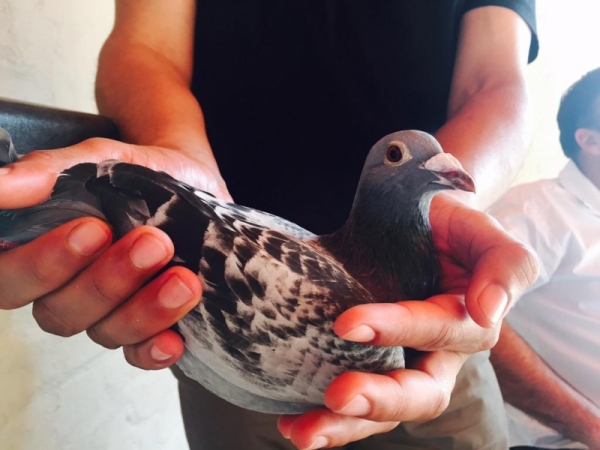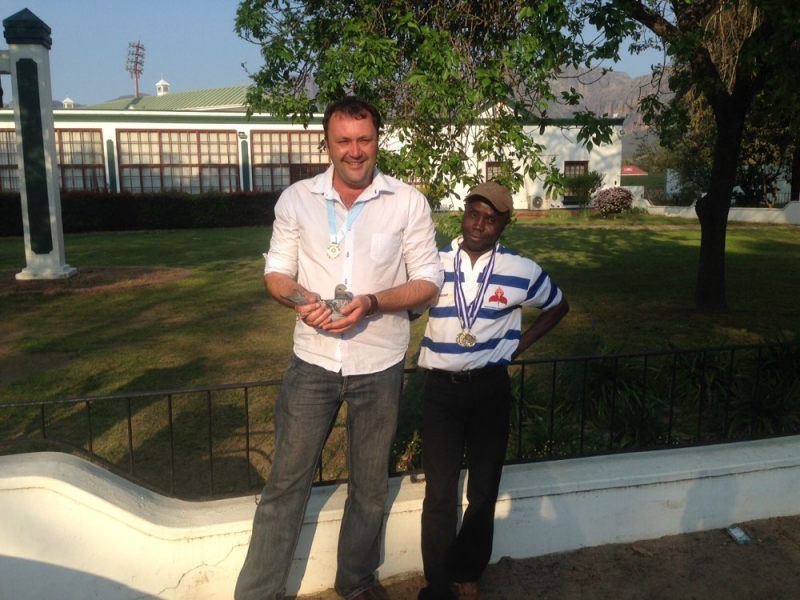Historic pigeon race unites fanciers

At dawn on Saturday 12 September more than 15,000 homing pigeons were released from Hanover in the Northern Cape, kicking off the largest single pigeon race in South African history. The birds burst into the air and began circling to orientate themselves. Within ten minutes they had vanished, setting off on the 600 km journey home.
The race, dubbed the Hanover Western Cape Classic, brought together pigeon fanciers from across the Western Cape for the first time.
Pigeon racing has a long history in the province, extending back to the late 19th century, but was racially segregated until the end of apartheid, with separate clubs for white and ‘coloured’ participants. The sport has gradually become more integrated since then — but certain, subtle divisions remain.
Pigeon fanciers train their birds to fly home from remote locations, taking advantage of pigeons’ innate ability to navigate over long distances. Among other cues, pigeons navigate using visual landmarks, the earth’s magnetic field, and the positions of the stars and sun.
Traditional pigeon races have a single starting point but multiple destinations, with each bird returning to its own loft. To compete in these events, fanciers load their birds onto custom-built trailers, which are hitched to cargo trucks and, after visiting a series of collection points, driven out to the Karoo.
The birds are timed upon their return and the winner chosen according to its average flight velocity, as pigeons from different lofts travel unequal distances.
In the Western Cape, these racing trailers are individually owned by different organisations, a number of which were established during apartheid. For example, the largest organisation in the province, the Federated Board of Homing Unions (FBHU), was formed in 1953 to give fanciers excluded from whites-only clubs a chance to compete in their own events.
FBHU members, who live as far apart as Wellington, Hawston and the Cape Flats, are usually prevented from competing against fanciers who race on different trucks.
According to research conducted by the Centre of Excellence for Sport Science and Development, at the University of the Western Cape, there were 1,662 registered pigeon fanciers in the province in 2013. There were more than 100 pigeon racing clubs in the Western Cape, spread out between 64 municipal areas.
“The Western Cape Classic is important for the unity of this sport,” said Rick Engelbrecht from the Western Cape Racing Pigeon Confederation (WCRPC), a newly formed umbrella body that organised the race.
“By working together we can bring people together and help make pigeon racing stronger.”
For the historic race, trailers from the province’s three major racing organisations — the FBHU, Western Cape Pigeon Transport Association, and North Boland Truck Association — were driven in unison to Hanover, where 15,912 pigeons, belonging to more than 1,300 fanciers, were liberated. Engelbrecht, who also entered birds in the race, travelled the 1,400 km round-trip within 24 hours, simply to record the release.

The event was won by Albert Lingenfelder from Villiersdorp, whose first bird recorded a race velocity of 89.51 km per hour. “I’m shaking. I’ve been racing for 15 years. This is the biggest win of my life,” he said at the official prizegiving, held at Boland Park cricket stadium in Paarl on Sunday. Lingenfelder credited his loft manager, Bodias Mabhifi, with the victory. (See photo above.)
“This feels wonderful. It’s a sunny day, a winning day,” said Mabhifi, who is originally from Zimbabwe.
Race organisers said that they planned to repeat the race next year.
Watch about 15,000 pigeons (the “20k” in the video title is incorrect) being released before taking a few moments to orientate themselves, and then flying home.
Minor corrections were made to this article after publication.

This article is licensed under a Creative Commons Attribution-NoDerivatives 4.0 International License.


